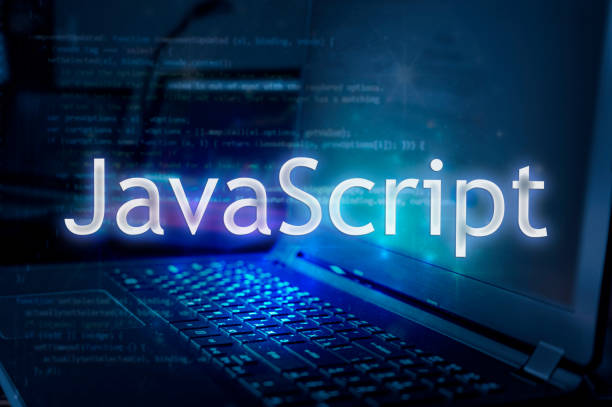Introduction
JavaScript is one of the most popular programming languages in the world today. Initially designed to make web pages interactive, it has grown into a versatile language that powers everything from web applications to server-side programming. In this guide, we’ll explore what JavaScript is, its features, applications, and why learning it is crucial for developers in the modern tech landscape.
What is JavaScript?
JavaScript is a high-level, dynamic, untyped, and interpreted programming language that conforms to the ECMAScript specification. It is an essential part of web development, alongside HTML and CSS. JavaScript enables the creation of dynamic and interactive web pages, enhancing user experiences.
Key Features of JavaScript

- Interpreted Language: JavaScript code is executed line-by-line by the browser, making it easy to debug and test.
- Object-Oriented: JavaScript supports object-oriented programming paradigms, allowing for code reusability and modularity.
- Event-Driven: JavaScript can respond to user actions and events, such as clicks and keypresses, making it ideal for interactive applications.
- Asynchronous Processing: With features like callbacks, promises, and async/await, JavaScript can handle asynchronous operations efficiently.
History of JavaScript
JavaScript was created by Brendan Eich in 1995 while working at Netscape Communications. Initially named Mocha, it was later renamed to LiveScript and finally to JavaScript. Over the years, JavaScript has evolved significantly, with the introduction of ECMAScript standards that define the language’s syntax and features.
Evolution of JavaScript Versions
- ES5 (2009): Introduced features like JSON support,
Array.prototype.forEach, andstrict mode. - ES6 (2015): Also known as ECMAScript 2015, it brought significant updates, including arrow functions, classes, template literals, and modules.
- ES7 to ES12: Subsequent versions have introduced various enhancements, such as async functions, array methods, and optional chaining.
Why Learn JavaScript?
Learning JavaScript is essential for several reasons:
1. Demand in the Job Market
JavaScript developers are in high demand, with companies looking for professionals who can create interactive web applications and enhance user experiences.
2. Versatility
JavaScript can be used for both front-end and back-end development, thanks to frameworks like Node.js. This versatility makes it a valuable skill for any developer.
3. Rich Ecosystem
JavaScript has a vast ecosystem of libraries and frameworks, such as React, Angular, and Vue.js, that simplify web development and enhance functionality.
JavaScript Applications
JavaScript is used in various applications across different domains:
1. Web Development
JavaScript is primarily used for creating interactive websites. It allows developers to manipulate the DOM (Document Object Model) and create responsive user interfaces.
2. Mobile Application Development
With frameworks like React Native and Ionic, developers can build cross-platform mobile applications using JavaScript.
3. Game Development
JavaScript is also used in game development, with libraries like Phaser enabling developers to create 2D games that run in web browsers.
4. Server-Side Development
Node.js allows developers to use JavaScript on the server side, creating scalable and efficient network applications.
Popular JavaScript Frameworks and Libraries
JavaScript frameworks and libraries simplify development and improve productivity. Here are some of the most popular:
1. React
A JavaScript library for building user interfaces, developed by Facebook. React allows developers to create reusable UI components. See tutorial here
2. Angular
A platform for building mobile and desktop web applications. Angular is maintained by Google and provides a comprehensive solution for single-page applications.
3. Vue.js
A progressive framework for building user interfaces. Vue.js is easy to integrate with existing projects and offers a flexible architecture.
4. jQuery
A fast and lightweight JavaScript library that simplifies HTML document traversal and manipulation, event handling, and animation.
Best Practices for Writing JavaScript Code
To write clean, efficient, and maintainable JavaScript code, consider the following best practices:
1. Use Descriptive Variable Names
Choose variable names that clearly describe their purpose, making your code easier to understand.
2. Keep Functions Small and Focused
Each function should perform a single task. This makes your code more modular and easier to test.
3. Avoid Global Variables
Minimize the use of global variables to prevent naming conflicts and ensure code encapsulation.
4. Comment Your Code
Use comments to explain complex logic and clarify the purpose of your code sections.
Conclusion
JavaScript is a fundamental skill for any aspiring web developer. Its versatility, ease of learning, and widespread usage make it an invaluable tool in the modern tech industry. Whether you are creating interactive web pages, developing mobile applications, or working on server-side projects, mastering JavaScript opens up a world of possibilities.
FAQs About JavaScript
1. Is JavaScript easy to learn for beginners?
Yes, JavaScript has a relatively low learning curve compared to other programming languages, making it accessible for beginners.
2. Can I use JavaScript for back-end development?
Absolutely! With Node.js, you can use JavaScript for server-side development.
3. What is the difference between JavaScript and jQuery?
JavaScript is a programming language, while jQuery is a library built on top of JavaScript that simplifies DOM manipulation and event handling.
4. How can I improve my JavaScript skills?
Practice coding regularly, build projects, and explore advanced concepts like asynchronous programming and frameworks.



Pingback: Simple and Essential GitHub Commands Every Beginner Should Know - Blogoo